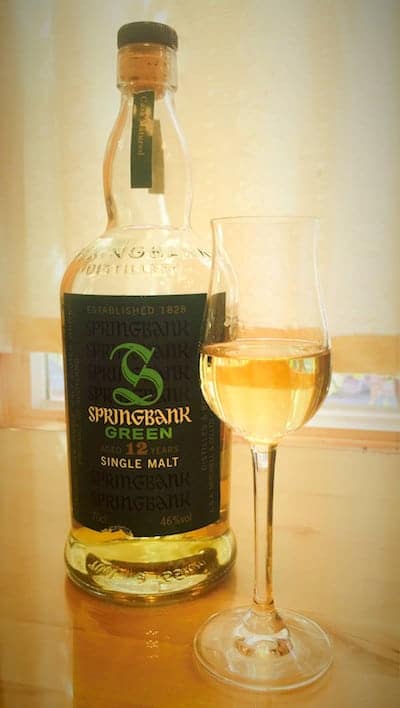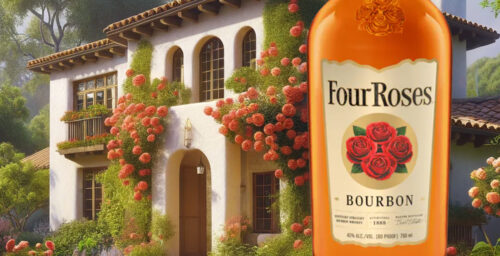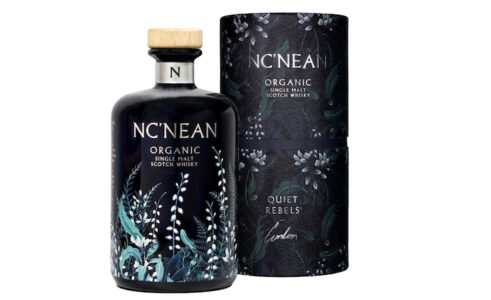
Those readers who follow my single malt Scotch whisky reviews know that I am quite fond of Springbank distillery, and this includes other offerings, such as Longrow (peated), and Hazelburn (triple distilled). Twelve-year-old cask-strength Springbanks are one of life’s not-so simple-pleasures. They feature a tried and true consistency, along with some really interesting variations on the theme, from one batch to the next.
46% ABV Springbanks are a bit less interesting, at least in ten- and twelve-year-old bottlings. Lately, I’ve become interested in batch variations of the OB Springbank 15-Year-Old. The latest 2016 release is rumored to be quite a bit more sooty and peaty than earlier batches. Perhaps in the future, I will have the opportunity to serve as a “taste tester,” since I have an unopened bottle in my collection.
Today, I’m reviewing the Springbank Green 12 -Year-Old. The whole “green” thing comes from the fact that Springbank used organic barley in the production; however, certain other ingredients weren’t strictly organic, and so the label “organic” was not appropriate for the whisky.
For an entry-level offering, this baby is worth examining, particular in relation to the promise it holds for future Springers that have been aged in higher quality casks. I’m not talking about the recent 13-Year-Old Green. Rather, I’m holding out hope for organic barley offerings that are up to the same high standards of the recent Springbank 12-Year-Old Burgundy, for example.
Green This, Organic That–Why Care?
Making organic whisky today is a step backwards in terms of technology, but in a very good way. It encourages a close relationship between the farmer and the distiller that helps to ensure a single malt Scotch will be the very best that it can be. One of the reasons people rave about old whisky has to do with the fact that the scents and flavors are bursting with more character than can be found in most modern mass-produced barley whiskies, which often gravitate towards bland, sappy, and sickly-sweet ephemera.
Organic barley can really up the ante in terms of a whisky’s complexity. Why? Because heirloom seeds produce plants that are more “real,” in the natural sense of the term. They grow as nature intended. In addition, organic barley tends to be cultivated “the old-fashioned way,” on small farms run by farmers who live day-to-day with their crops, rather being grown in giant factory-style corporate farms with plant strains designed to produce especially high amounts of alcohol. Using this sort of highly efficient barley seed can also result in fewer “happy accidents,” which vary from year to year, and crop to crop.
When crops grown near a distillery are sourced, like barley used in world famous 1966 Local Barley Springbanks, the end result has the potential to be not merely good, but really, REALLY good. Smaller farms have the luxury of using older strains of barley, which have undergone less tinkering on the part of scientists.
Local farmers also have the tendency to choose their seed based upon desirable traits that can benefit a whisky, especially if a distillery like Springbank expresses an interest in the harvest even before the seed has been planted. Some of these farmers are descendants of folk that worked the same plot of land with heirloom seeds over a hundred years ago, or longer.
Another distillery that has been making strides forward in terms of offering organic batches of whisky is Bruichladdich. I tasted Organic Scottish and Organic Islay Barley offerings a few years ago. The distillery’s dedication to offering such alternatives is ahead of its time. This said, I wasn’t bowled over by the scent or the flavor of either organic whisky. They were both fairly rudimentary, in terms of depth, power, and complexity, rather like the “Green” Springer in front of me today, while I write this review.
Since we’re on the subject of disappointment, I might as well admit that the 12-Year-Old Green contains some of my least favorite Springbank whisky in recent memory. That’s a shame because I really do appreciate the move towards using pesticide-free organically grown barley, which is refreshing to see at a time in an industry where quite often the opposite is the case.
Tasting Notes
Vital Stats: 46%, OB, organic barley, 9000 bottles, 2014. Price in the USA typically ranges between $100-125.
Appearance: White wine
Nose: Orchard fruits like peaches and Granny Smith apples; white chocolate; lemon Pledge furniture polish; hot coastal sand in summer time (feel it squeezing between your toes); a very slight hint of creosote, but only a “1.5” on the Ardbeg scale; sea breeze; burlap sacks in a root cellar; a draft of peat smoke; and, finally, damp muslin curtains at the sea shore.
Wow, I keep coming back to the whole coastal theme in this bottle. It kind of surprises me, but it’s undeniably there. I hadn’t noticed before that it was quite so pronounced. Very nice, very nice. Now I want to drive to the coast in a vintage racing car, and take this bottle with me. Chitty Chitty Bang Bang!
Palate: I’m reminded a bit of the new Kilkerran 12 Year Old. Initially on the palate, bitter oak greets one’s taste buds, kind of like the nostalgic taste of chewing on a Popsicle stick, and who hasn’t done that as a kid?
Walnuts emerge, along with stone ground mustard, and some nutmeg. I know, I know, this review is already making the “Green” sound more complex than it actually is. Well, them’s the breaks. I’m anything if not thorough. Moving on . . . a few sweet impressions help to balance out things on the back-end. I’m getting candy corn, Canary melon, and vanilla cookies.
Not to be outdone by candy corn on the back-end of the palate, there’a also blackened BBQ corn-on-the-cob , which brings us full circle to the next sip of industrial/bitter oak. Oh yeah. It’s the same thing, all over again: bitter, industrial, sweet, and then a few kernels of fire-roasted corn. Hey, I like that…sort of a Yin & Yang thing happening. Not bad for a rather straightforward, and some might say “pedestrian,” 46% 12-Year-Old Springer.
Finish: Medium-long. On the death a nice vanilla creme note surfaces, along with the suggestion of black licorice, if the whisky has been left to steep for a spell in one’s glass. Time and oxygen really help, as they usually do, at least in a bottle that is still three quarters full.
A few drops of water simplifies the dram, creating a more uniformly smooth whisky, albeit a less creamy one. Does that sound like a paradox? Put another way, a half teaspoon of water does a fairly good job of eliminating bitter oak on the palate, if that offends. Industrial notes in the nose also fade, and the finish becomes a tad shorter. I don’t taste much vanilla on the finish after my dram’s ABV percentage has been reduced. Instead, Springbank’s distillery character reigns supreme.
Final Thoughts
In the case of this fairly restrained Springer, the distillate is king. Twelve years in oak leaves behind more bitterness than one typically finds in Springbank 12-Year-Old Cask Strength offerings, which are drawn from a combination of first fill and second fill sherry casks, as well as bourbon casks. Even though the Springbank 12-Year-Old Green was aged exclusively in bourbon barrels, quite a few must have been refill. Personally, I think some of the reviews on the Internet tended to exaggerate the sweet side of this dram, although it is fairly creamy.
If the 12-Year-Old Green were a little less expensive, then I could whole-heartedly recommend buying a bottle. There’s nothing objectionable here, but neither is there anything outstanding. It drinks well, one glass after another. What was that old Schaefer beer tagline? The one to have when you’re having more than one. I think this comparison is apt, if only in theory since old school beer and old school whisky are separate animals from a different genus and species.
To use the time-worn cliche of whisky reviews, this 12-Year-Old Green would make a great “daily dram,” aside from its price tag. Then again, I can recall tasting an especially good batch of the OB Springbank 10-Year-Old, which I seem to remember liking even more. But that was quite a while ago – years, actually.
I can definitely say that the Springer Ten currently in my cabinet is not as creamy, as rich, or as interesting as Mr. Green. Since I’m rather thorough, and somewhat obsessive, I actually compared the two, side-by-side. Mr. Green won handsomely. However, I also took out a couple of different 12-year-old cask strength bottlings to compare. OMG, they were both sooo much better. And they also cost quite a bit less. Sorry, Mr. Green. You could of been a contender. So many refill bourbon barrels, and so little time. . . .
This said, I’ve got an 18-year-old single cask refill sherry Springbank that is just extraordinary. I’d put that fellow up against anything in his class: a gentleman from sole to crown, with a complex finish that goes on and on and on. So let that be a lesson to you: refill casks needn’t always be equated with life’s simpler pleasures.







